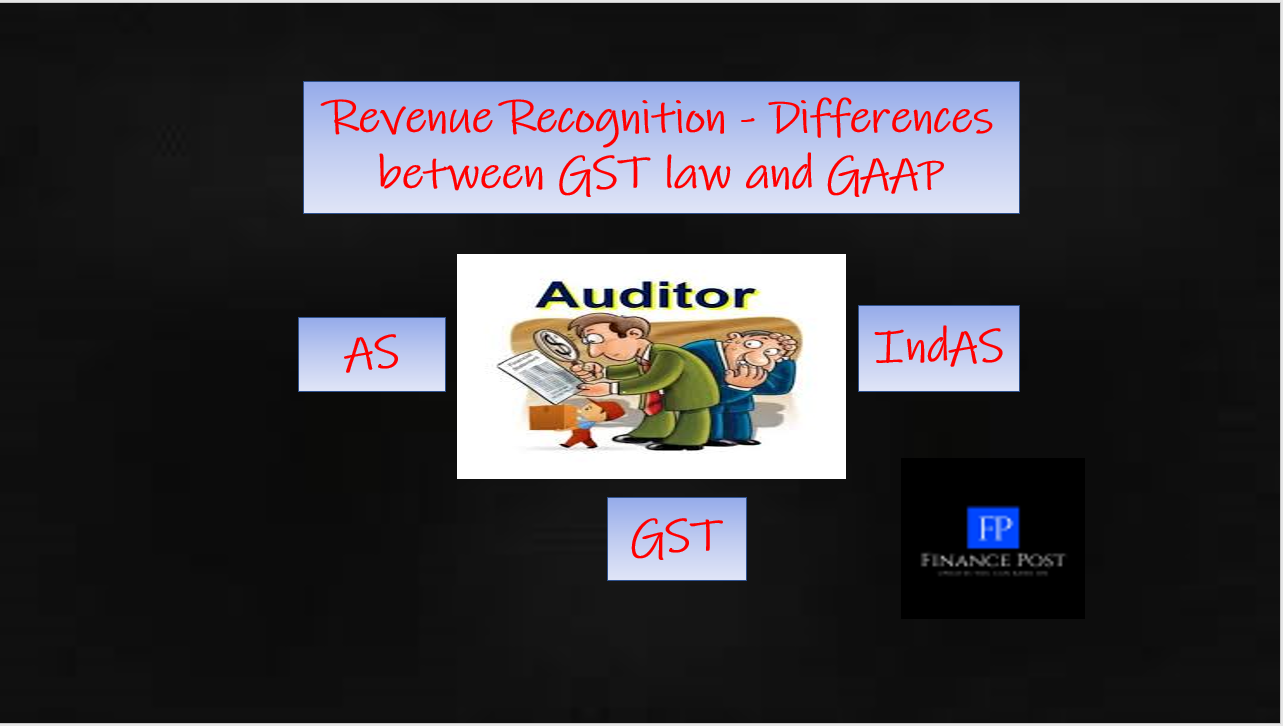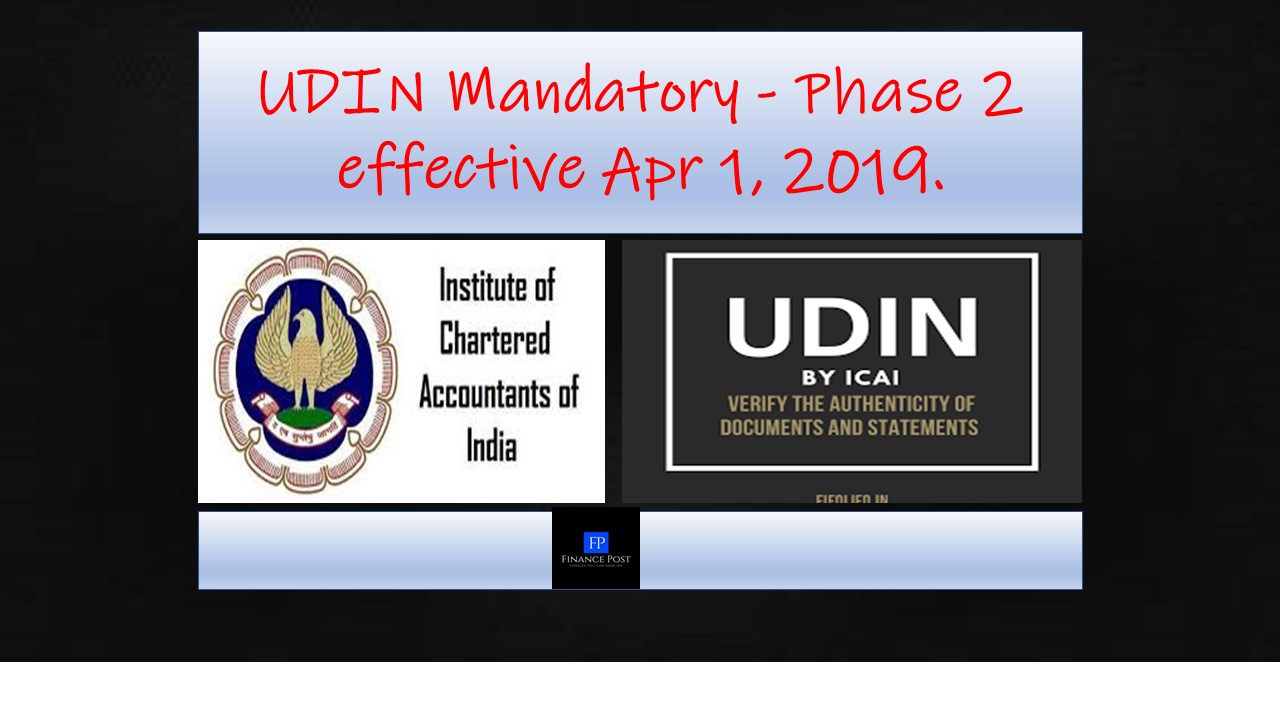
Last updated on May 16th, 2021 at 08:11 pm
Revenue recognition – Differences between GST law and GAAP
In the earlier post, we saw various differences between the Accounting Standards / Ind AS and GST Law. In this post, we will see in detail the specific differences between the Revenue recognition as per Accounting Standards and Revenue / Turnover as per GST Law.
Point of Recognition:
There is a broad difference in the point of time when one will recognize the revenue.
According to Accounting Standard, Revenue is to be recognized either at a point in time or over a period of time when the customer obtains control over the promised service.
According to GST Act & Rules, the time of supply is triggered when the invoice is raised, or payment is made whichever is earlier. This might lead to a situation wherein GST would be paid on the contract as per the date of invoice, but the revenue would not be recognized in the books because the customer may not have got the ownership or relevant benefits from the contract. For example AMC contracts, Insurance contracts, deferred or advance payments, etc.
This might lead to a situation wherein GST would be paid on the contract as per the date of invoice, but the revenue would not be recognized in the books because the customer may not have obtained the necessary benefits from the contract.
For example AMC contracts, Insurance contracts, deferred and advance payments.
What is the “Time of Supply” from the Accounting Standards Perspective?
Time of supply for sale of goods or for the rendering of services can be.
Sale of Goods:
Time of sale or supply shall be construed when the seller has transferred the property or ownership in the goods to the buyer for consideration. This transfer generally results in the transfer of significant risks and rewards of ownership to the buyer. However, in some situations, the transfer of property in goods might not coincide with the transfer of significant risks and rewards of ownership. In such situations, the revenue is recognized at the time of transfer of significant risks and rewards of ownership to the buyer.
Rendering of Services:
Revenue from service transactions is usually recognized when the service is performed, either by:
(a) Proportionate completion method: Generally, where the performance consists of the execution of more than one act; the revenue is recognized proportionately by reference to the performance of each act.
(b) Completed service contract method: Where performance consists of the execution of a single action, or the services are performed in more than a single act, and the services yet to be performed are so significant in relation to the transaction taken as a whole that performance cannot be deemed to have been completed until the execution of those actions.
What is Time of Revenue Recognition from the GST Perspective?
As per the provisions of the CGST Act, the revenue recognition for the supply of goods and fir rendering of services is done as follows:
Supply of Goods: Revenue shall be recognized as per Section 12 as mentioned below
(a) on the date of issue of an invoice by the supplier or the last date on which he is required, under sub-section (1) of section 31, to issue the invoice with respect to the supply; or
(b) the date on which the supplier receives the payment with respect to the supply:
Rendering of services: revenue shall be recognized as per Section 13 as mentioned below
The time of supply of services shall be the earliest of the following dates, namely:—
(a) the date of issue of an invoice by the supplier, if the invoice is issued within the period prescribed under sub-section (2) of section 31 or the date of receipt of payment, whichever is earlier; or
(b) the date of provision of service, if the invoice is not issued within the period prescribed under sub-section (2) of section 31 or the date of receipt of payment, whichever is earlier; or
(c) the date on which the recipient shows the receipt of services in his books of account, in a case where the provisions of clause (a) or clause (b) do not apply
The definition of supply under the GST is very comprehensive and includes sale, transfer, barter, exchange, rental, lease, disposal, stock transfer etc.
On the contrary, in ‘financials’ revenue is recognized when goods are sold, or services are rendered. No revenue is recognized when fixed assets are sold/disposed of, except for profit on the sale of such assets or when goods are transferred to the branches. Such transactions would result in a difference between the revenue reported under the GST and the ‘financials’.
Value of revenue recognition from the GST perspective
Value of supply of goods or services or both under the GST law is a transaction value i.e. the price actually paid or payable for the said supply and would include any duties and taxes paid under any law other than the GST, incidental expenses incurred to meet such supplies, the interest charged if any, etc.
Valuation of contracts under Ind AS might differ in certain aspects from the GST Laws. For example, the contract value may not include any duties and taxes paid which is refundable, interest on delayed payment, expenditure incurred by the recipient, etc. These differences might lead to differences in the valuation of contracts.
GST Law v/s IndAS
With the set of entities moving on to the Ind AS financial reporting framework, it is important to understand the interplay of the GST and Ind AS. Few specific aspects are discussed below:
Supplies without consideration: As per Schedule I of the CGST Act- GST is leviable on certain transactions even if such transactions are made without consideration – like the supply of goods from principal to agent, disposal of business assets, supplies to related parties, etc.
Under Ind AS, transactions without any consideration would not form a part of the financial statements and would be treated as a non-balance sheet item / off-balance sheet item.
Post-sales discounts: If the entity has the practice of granting discounts to its customers on a post-sale basis, then for providing such discounts the entity may raise a financial credit note which would not be subjected to GST but would be reported as discounts in the financial statements.
Transitional provisions under GST: The transitional provisions in Section 142(1) of the CGST Act, state that a registered person under the GST would be required to raise a tax invoice for the goods returned by him to the supplier if such goods were bought by him in the pre-GST regime. Thus, a registered taxpayer under the GST would be obligated to raise a tax invoice and the same would form a part of his turnover under the GST Laws. However, as per Ind AS while reporting it in the financial statements it would be treated as a reduction from purchases and not as turnover.
Related Posts
- How to do a transaction in Digital Rupee (CBDC-R)? – A Step by step Guide - 10/12/2022
- Can you rectify your 26AS? - 20/09/2022
- Tax implications on Cashback - 09/09/2022
Disclaimer: The above content is for general info purpose only and does not constitute professional advice. The author/ website will not be liable for any inaccurate / incomplete information and any reliance you place on the content is strictly at your risk.
Follow us on Social Media by clicking below
Follow @financepost_in


Be the first to comment